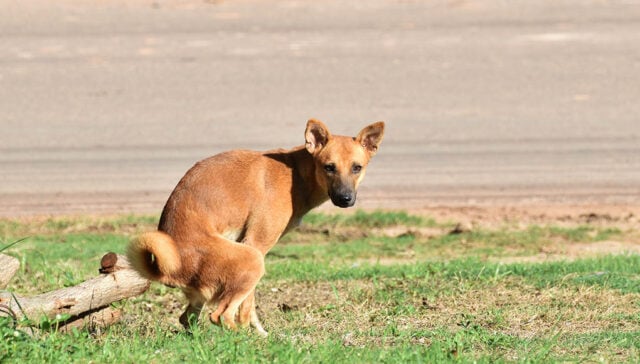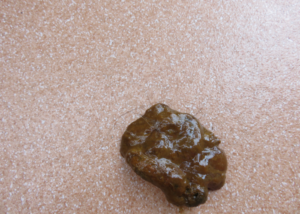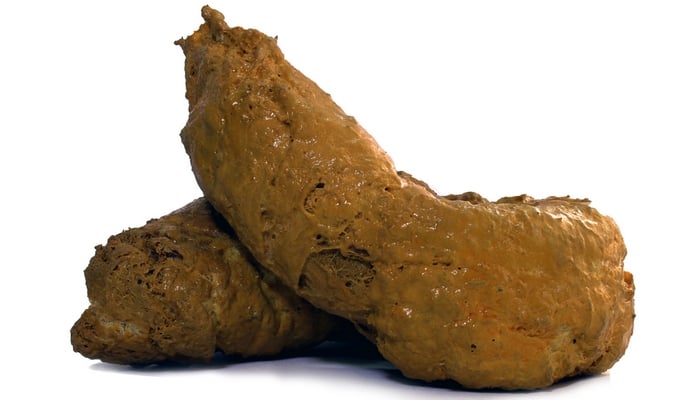
Table of Contents
Did you know dogs typically excrete 3/4 pound of waste daily, equivalent to 274 pounds per year? Now that's a lot of poop!
It may sound gross for some, but the truth is, poop talks are important because it can tell you the status of your dog's health.
Plenty of factors can affect a dog's waste and alter its appearance. And if you notice foamy dog poop, you should consult with your vet for further examination.
In this blog, we'll discuss the possible causes and treatments for foamy poop in dogs and what healthy poop should look like.
Let's begin!
RELATED: The Ultimate Dog Poop Color Chart (with 9 Pictures!)
Common Causes of Foamy Dog Poop
When we see an abnormality in the color and shape of dog poop, this could be the first sign that something is not right in their digestive system or that they have food intolerance.
Unfortunately, it can also mean something much more serious, such as cancer.
But for the most part, here are the common culprits of foamy poop in dogs.
Food Allergy
Food allergy is more common in dogs than you think.
This indicates that your dog's digestive tract is not responding well to the food it has eaten. This often happens with soy or dairy products, wheat gluten, beef, and chicken eggs.
When your pup takes any of these products, they can cause the immune system to release antibodies, which can lead to diarrhea and vomiting.
Diet Change
An abrupt change in your dog's diet can also cause foamy stools as it can shock their digestive tract.
Their gut will initially reject the new food, resulting in vomiting, excess gas, and diarrhea.
Bacterial Infections
Unfortunately, infections in the gastrointestinal tract can also cause bubbly or foamy feces in dogs.
When there's an excess fermentation of food by the bacteria, it can increase gases in the gut.
RELATED: DIY Dog Gas Relief Home Remedies
Eating Inappropriate Objects
In some cases, eating inappropriate items, such as grass, can also cause foamy stools in dogs.
This usually happens with younger dogs. Puppies love to explore and try to eat anything they find curious, such as pens, bones, leaves, and more.
When this happens, it can cause inflammation or a gut wall infection that results in foamy stools, mucoid stools, or both.
Undigested Objects
Examine your dog's poop closely. If you see yellow balls or marks distributed in it, it can be caused by incompletely digested food or inappropriate objects.
Examples of these foods and objects are corn, yellow crayons, chalk, markers, or any yellow objects they might have swallowed.
Parasites
Parasites such as Coccidia and Giardia can cause foamy dog poop.
When your pup is infected with parasites, it is usually accompanied by other symptoms such as vomiting, weight loss, scooting, diarrhea, and fatigue.
Parasites are the culprits for slow nutrient absorption, leading to high gut gas production.
RELATED: TOP #77: How to Protect Your Dog from Parasites
Malabsorption of Food
Malabsorption is a type of digestive issue in dogs that occurs when they are unable to digest food or absorb the vitamins and minerals after digestion.
It is typically caused by conditions preventing the small intestine or pancreas from digesting and absorbing fat.
Liver Damage
The liver is an essential part of the digestive system. It removes waste products and produces bile, a chemical that breaks down fats.
Liver damage can come from drugs, infections, cancer, and other diseases.
RELATED: Study: New Blood Test Makes It Easier to Detect Liver Disease in Dogs
Pancreatitis
Aside from liver damage, pancreatitis is the one you should look out for, as this condition can be fatal.
Pancreatitis is an inflammatory reaction that can result in abdominal pain, vomiting, and a lack of appetite in dogs.
If you notice your dog pooping yellow and foamy feces, vomiting, fever, and abdominal pain, consult with your vet immediately.
It's best to catch pancreatitis in its early stage.
Gallbladder Problems
Last on the list is gallbladder issues. Examples include gallstones, tumors, and more. These problems can cause yellow stool in dogs.
When there's no bile from the gallbladder to the intestines, fat will appear in their poop and making it color yellow or mustard.
Foamy Dog Poop with Color
Your dog's poop color will also depend on whatever they ate. But if it's too colorful and unusual, and not to mention the bubbly texture, your dog's foamy poop can mean the following.
Brown Foamy Dog Poop
Even though the healthy dog poop color is brown, it should not be foamy.
But if you see it bubbly or foamy, it can be caused by:
- Food intolerance
- Eating inappropriate objects
- Parasite
- Malabsorption of Food
Yellow Foamy Dog Poop
- Undigested yellow object
- Liver damage
- Pancreatitis
- Gallbladder problems
White Foam in Poop
- Gas buildup caused by eating too fast
- Excessive fat intake
- High levels of calcium
- Bloating
What Does Healthy Dog Poop Look Like?
The perfect dog poop is brown, long, and a bit squishy. The size should be proportionate to the amount of food the dog ate.
To determine whether your pup has healthy poop, you can track it using the four C's: Color, Consistency, Content, and Coating.
Color
As we've discussed above, healthy dog poop is chocolate brown. During digestion, the gallbladder releases bile to help break down food.
There's a pigment in the bile called Bilirubin, which gives the brown color in a healthy poop.
Consistency
The consistency of a dog's poop is connected to its diet. Vets use a numerical system to score consistency.
The fecal scoring system values stool from 1 to 7. 1 represents very hard pellets, and 7 is a puddle.
If you're looking for the perfect stool, that's a 2. This score is a firm stool that looks like a caterpillar and feels like Play-Doh clay when you press or hold it.
Content
Vets also examine dog poop to determine healthy feces. The content inside the stool should be the same as the rest of it.
So if your vet finds any abnormal content, such as worms, foreign materials, or fur, it can mean that there's an issue.
Beware of worms, such as roundworms, tapeworms, or even big clumps of fur, which can mean that your pet is overgrooming himself.
Overgrooming is a sign of stress, allergies, skin disease, or boredom.
Coating
A healthy dog poop should not have any coating over it, so if you're collecting a sample off the grass, no trail should be left behind.
If you see a mucus coating, it is usually connected to large bowel inflammation and occurs simultaneously with diarrhea.

What To Do If My Dog's Poop is Foamy?
Once you notice that your dog's poop is foamy or unusual, you must examine the situation closely and don't jump to conclusions.
Monitor your pet carefully and try to backtrack on the possible things or food that they have eaten lately.
When your healthy dog experiences diarrhea, vets recommend withholding food for 12 to 24 hours or just feeding it small quantities of a vet-recommended diet for gastrointestinal problems.
However, fasting can also cause your dog's blood sugar to drop, so it's best to consult your vet before doing it.
You should also look for other symptoms, such as vomiting, lethargy, lack of appetite, and abdominal pain, since these will help your vet diagnose your dog's condition faster.
If your dog is experiencing a lot of pain, bring him to the emergency room quickly.
Your vet will most likely collect a blood and stool sample for them to examine and give the right diagnosis.
RELATED: 9 Emergency Dog Health Conditions That Cannot Be Delayed
FAQs About Foamy Dog Poop
What does unhealthy dog poop look like?
If your dog's poop has shades of the color orange, yellow, green, or gray, this can mean that they are not in their healthiest state or can even be suffering from an underlying disease.
What does a dog's poop look like with parvo?
If your dog suffers from parvo, he will experience vomiting and diarrhea.
Their vomit can be clear, yellow, or brown, and their diarrhea will most likely contain blood and light yellow or mustard color.
How do I know if my dog has bowel problems?
Dogs that have bowel problems often experience symptoms such as:
- Excessive drooling
- Constipation
- Diarrhea
- Vomiting
- Loss of appetite
- Abdominal Pain
- Bloating
- Dehydration
- Lethargy

Foamy Dog Poop: Before You Go…
Let this be a reminder for you to check your dog's poop from time to time.
I know it's gross and will probably stink a lot, but examining your dog's feces can reveal much about his health.
These health concerns are best caught early so that they'll be easier to cure.
If you've noticed something alarming or unusual about your dog's excretions, you should ask your vet about it.
Got any more poop-related concerns? Check out our recommended articles below!














